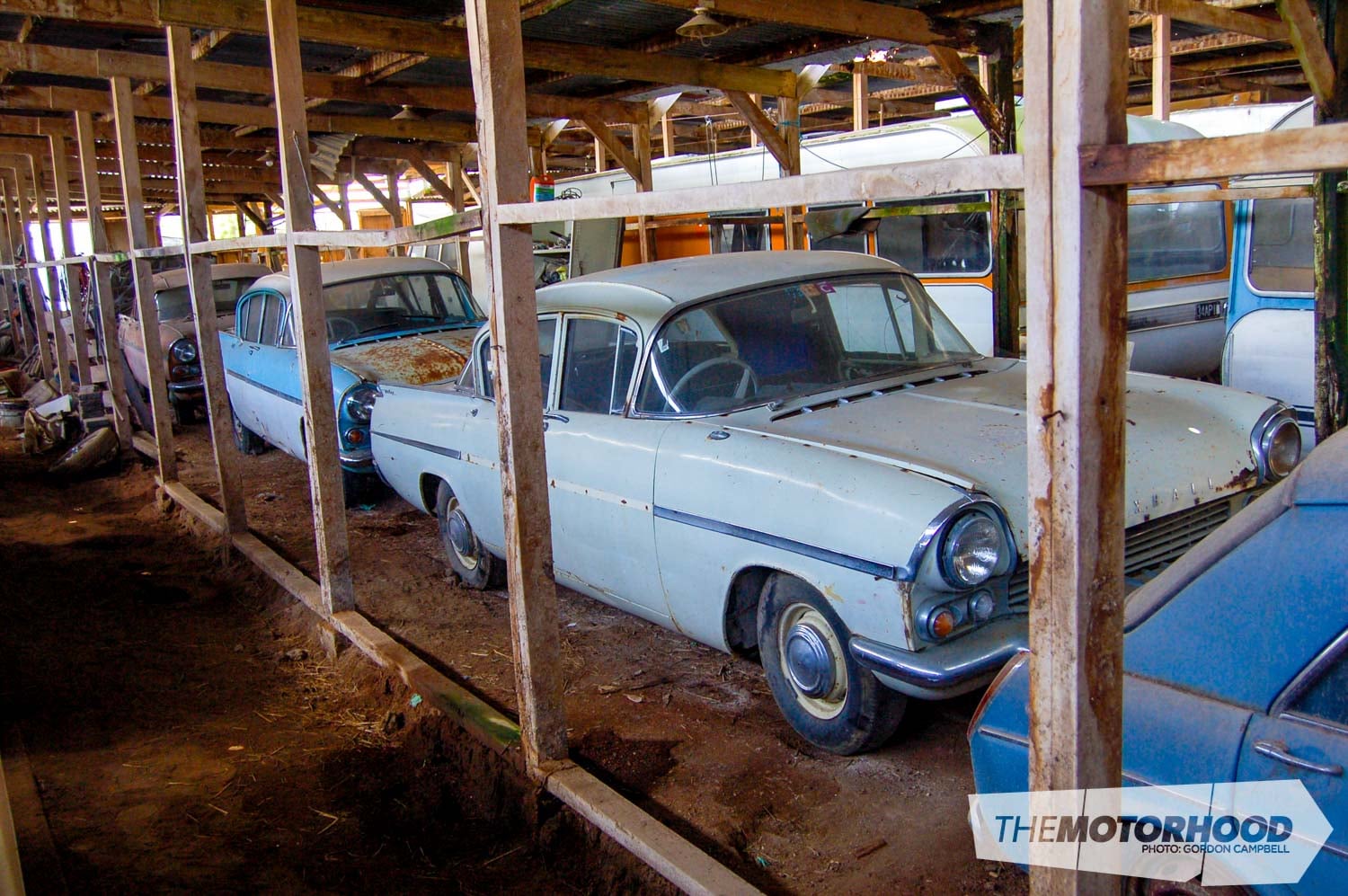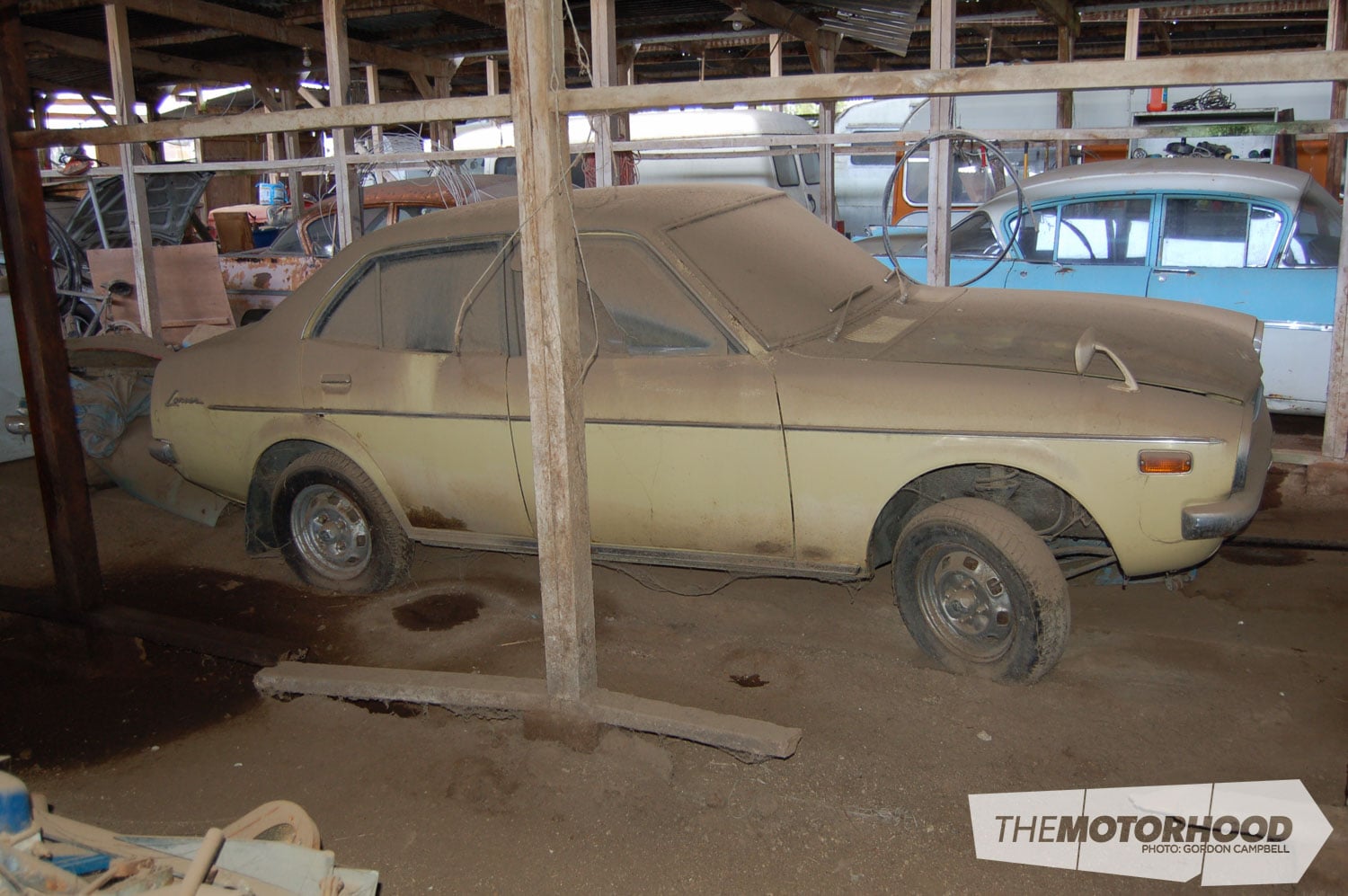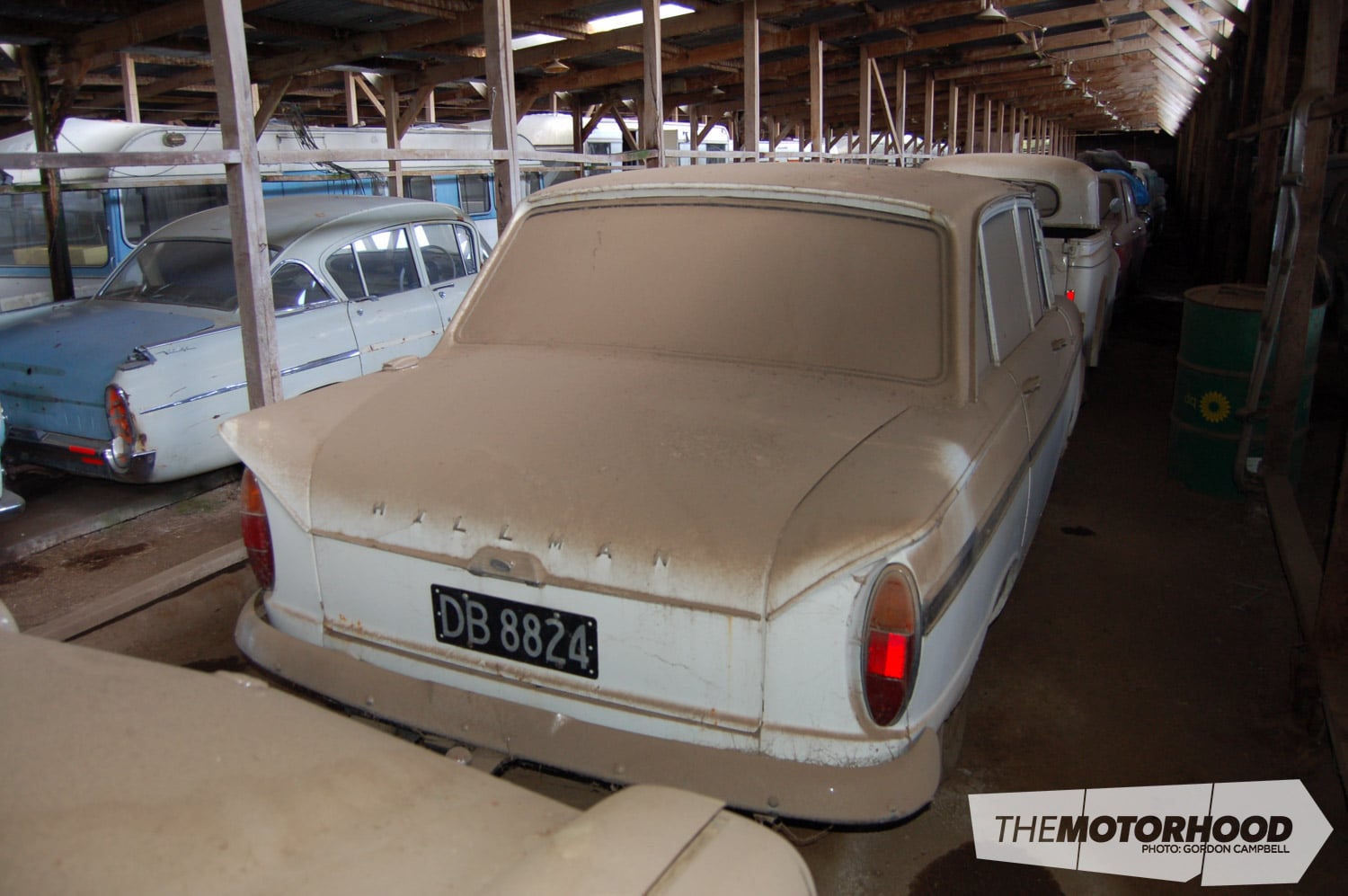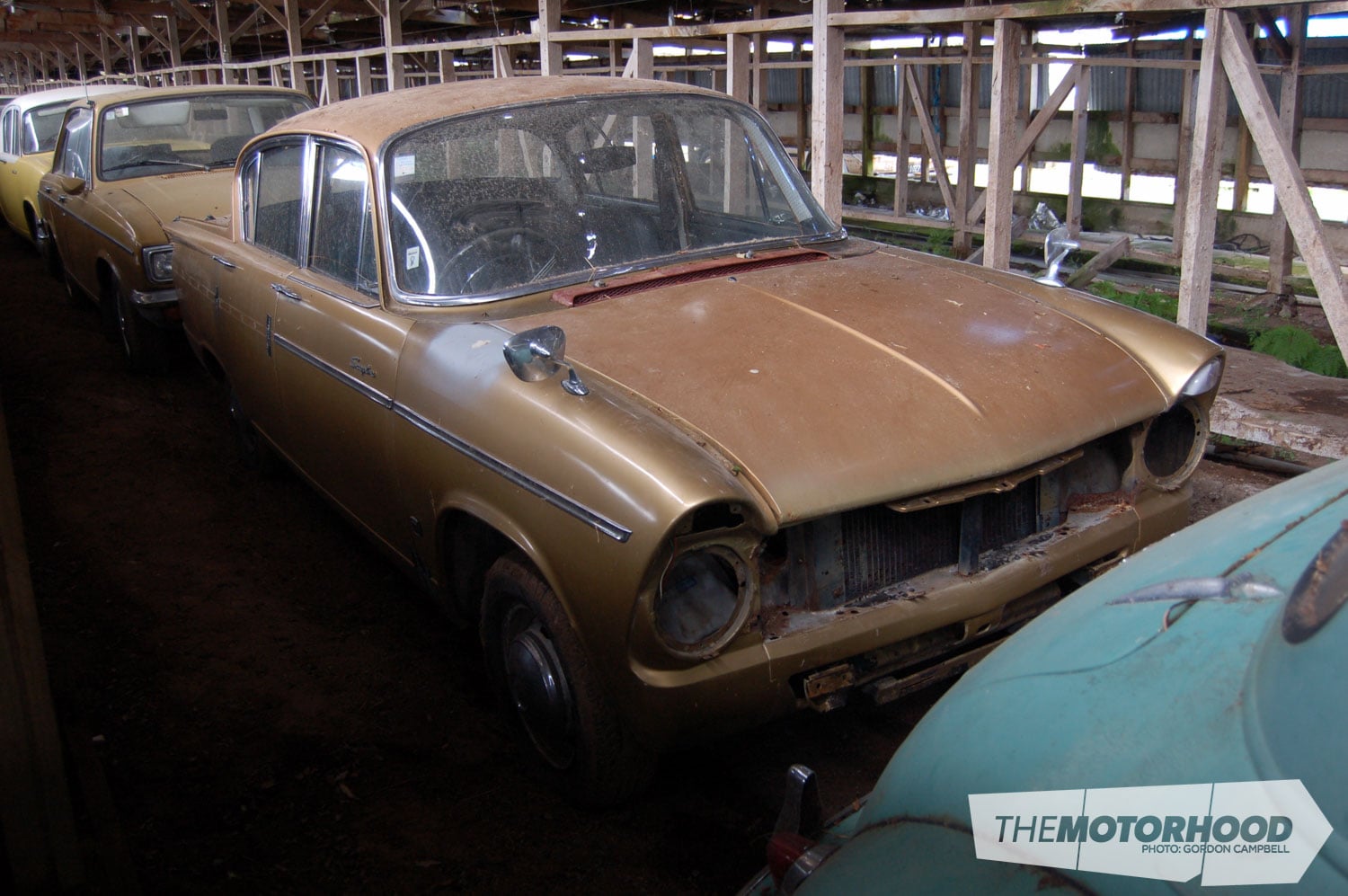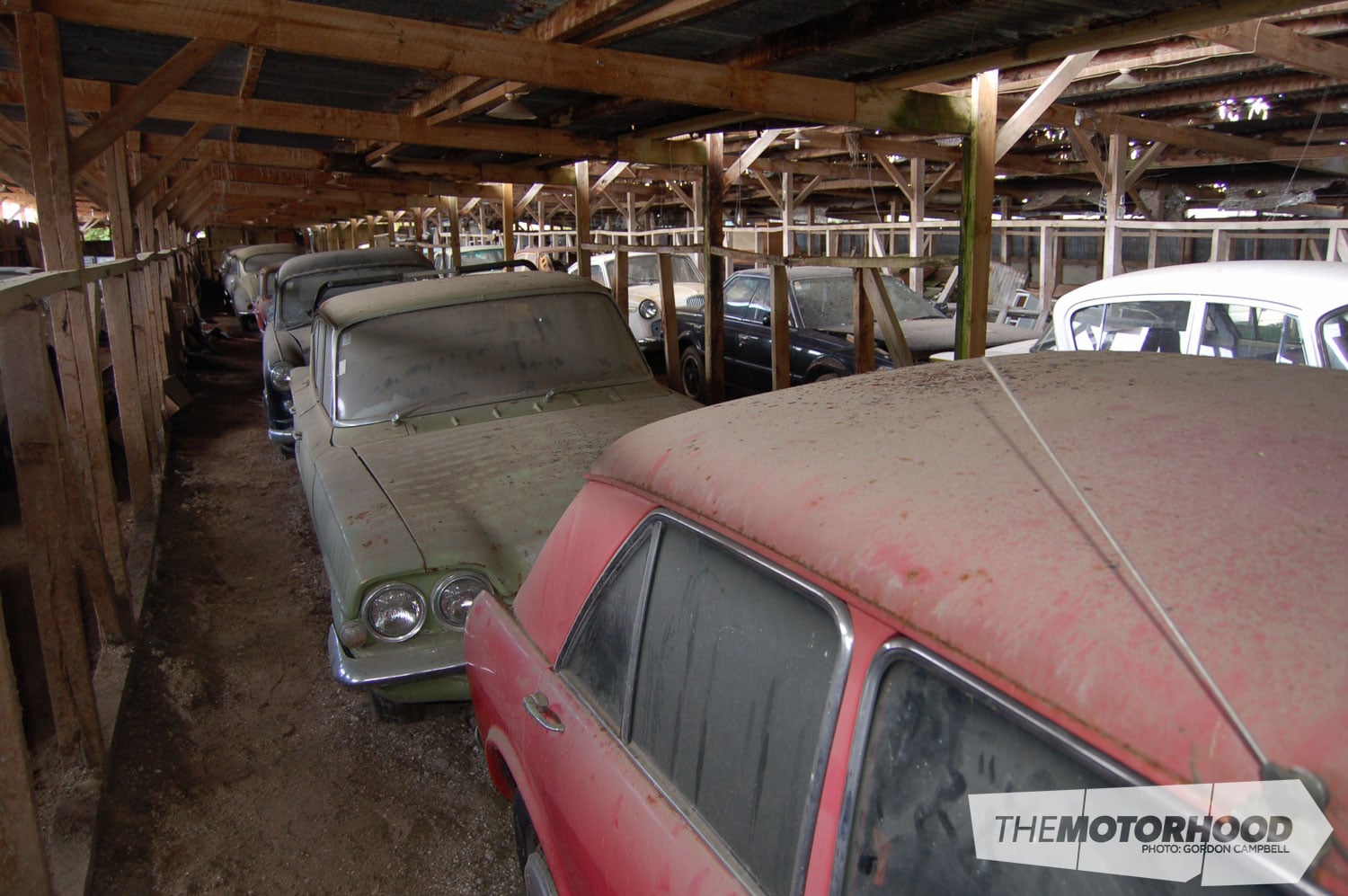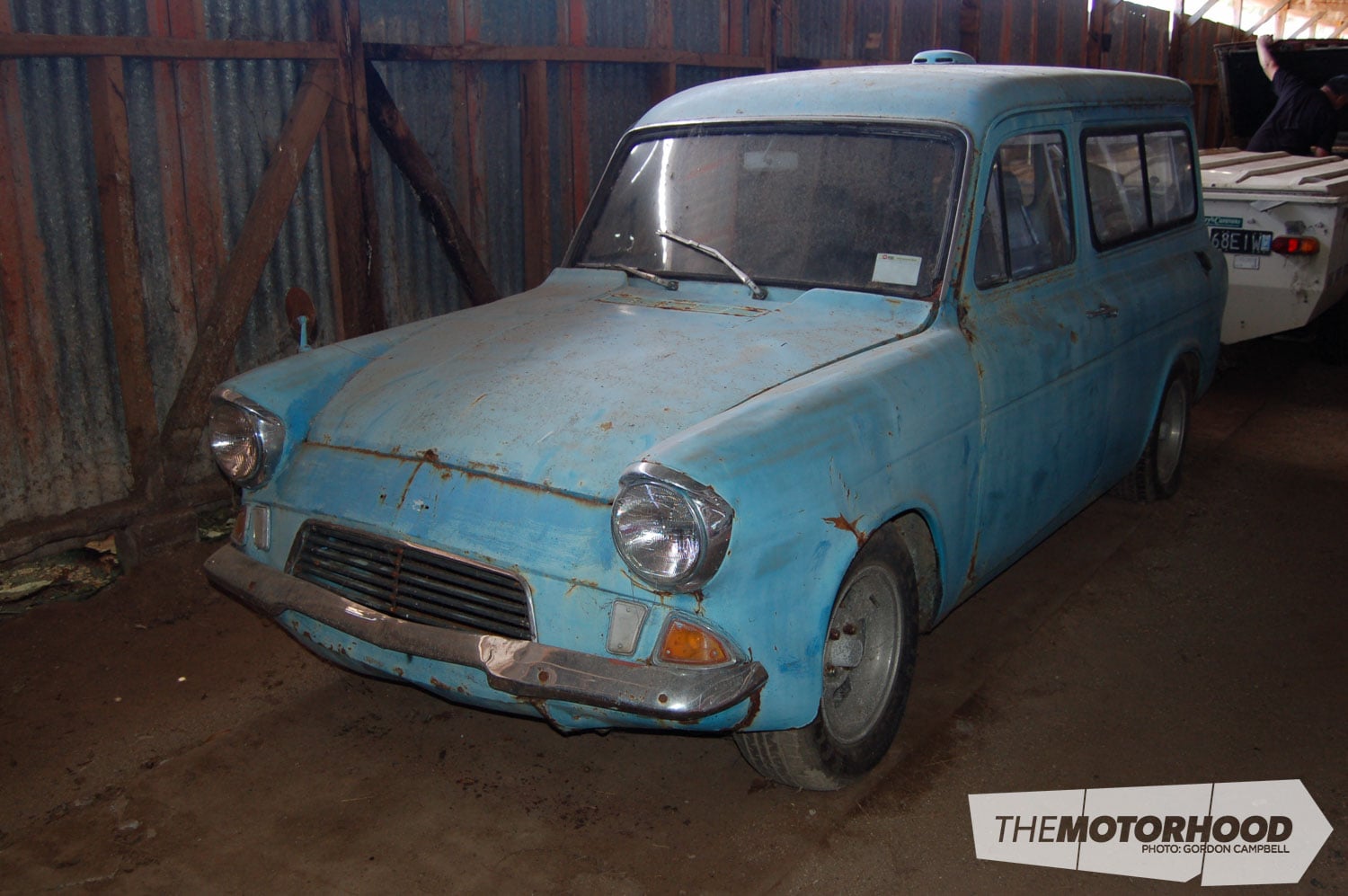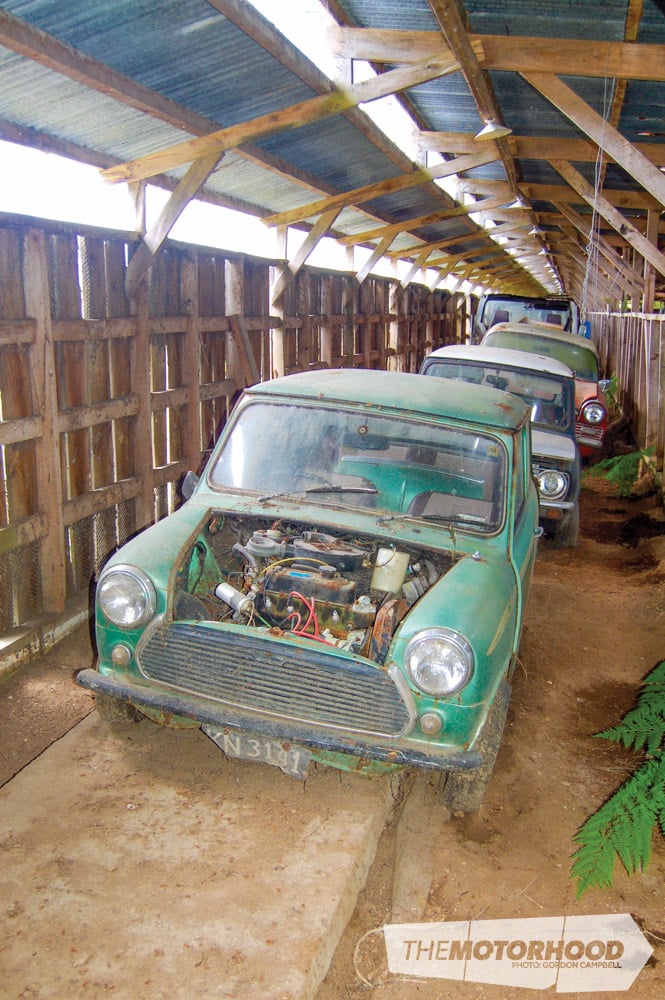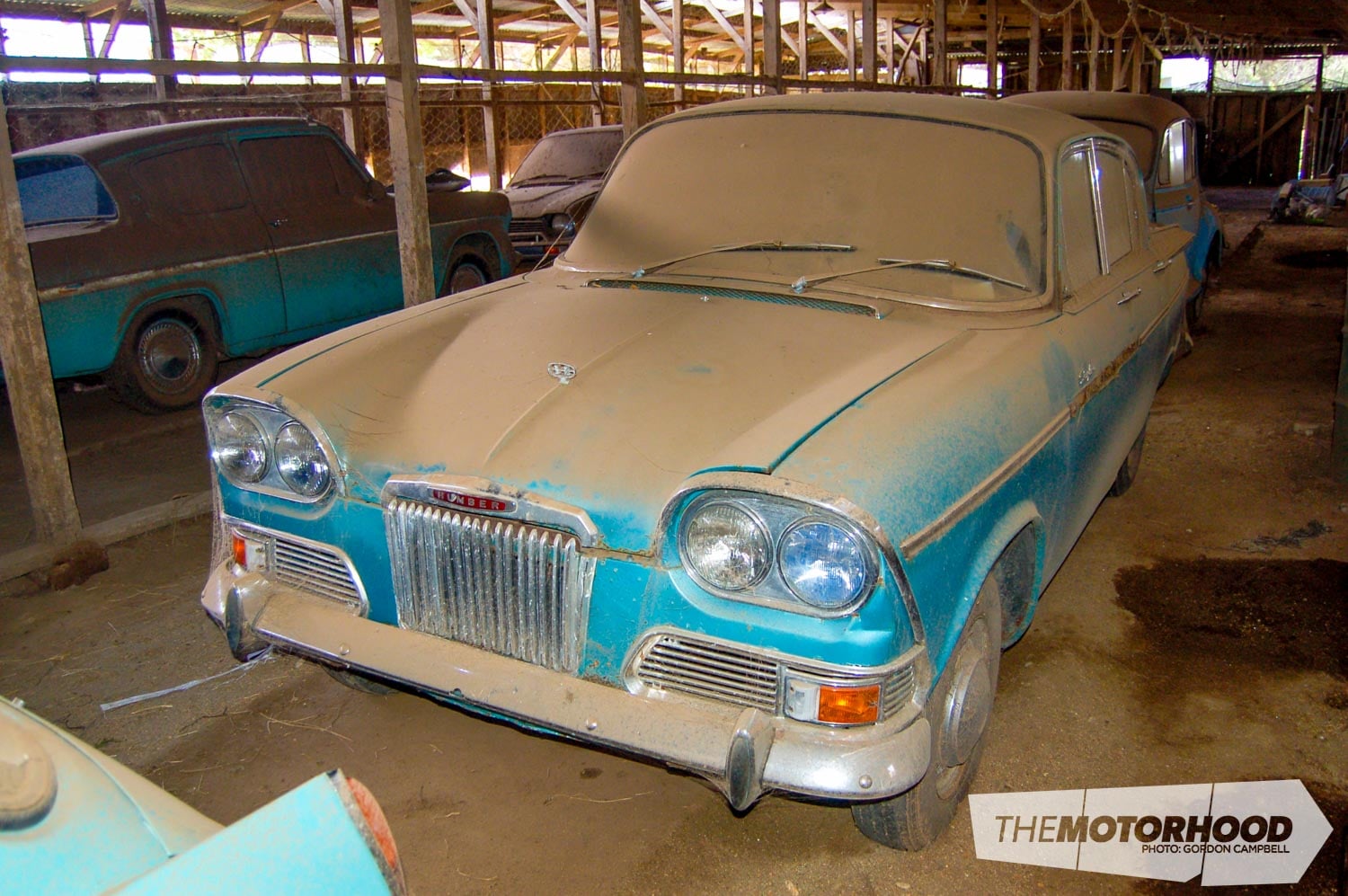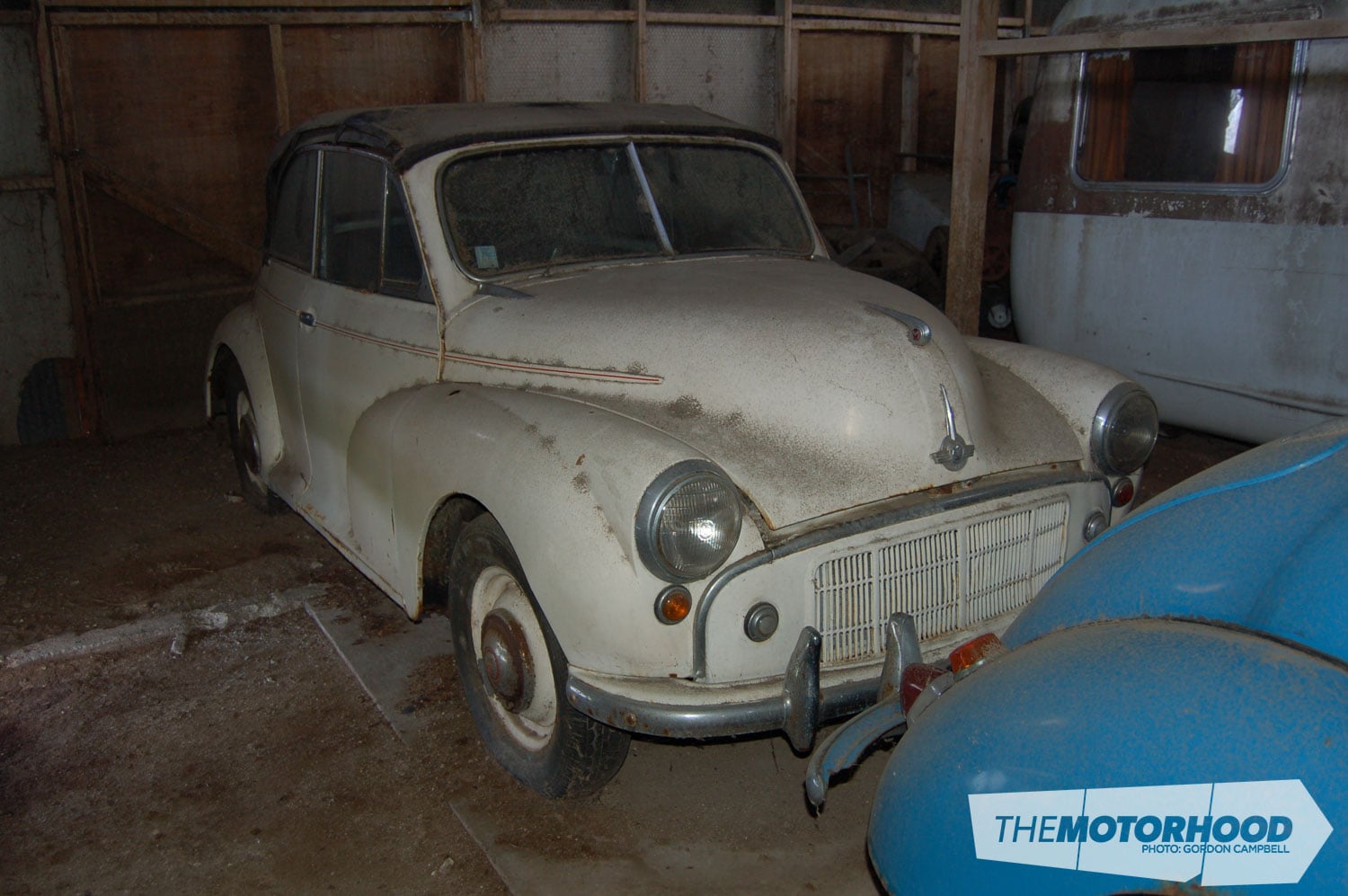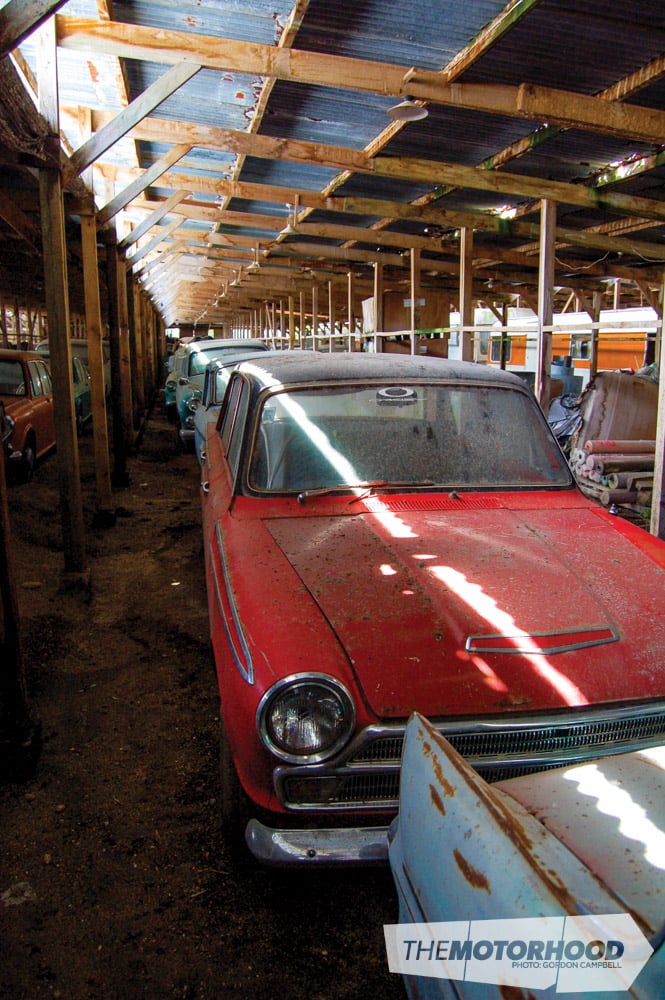data-animation-override>
“Gordon Campbell opens up a barn and discovers more than 200 classic cars. After blowing the dust off some of them, he sent in this photo report”

Most of us have seen that wonderful internet fairy story about a couple who bought a farm in Portugal, complete with a mysterious and securely padlocked barn. The story goes that once the locks were cut off the couple found themselves gaping at a veritable treasure trove of classic cars — all of them liberally covered in dust, but intact. It was the stuff we all dream of but, alas, it was apparently all a computer-generated hoax. It’s not the only story running along those lines that’s gone viral on the internet, and it’s hard to know what to believe in these days of Photoshop image manipulation.

However, forget about the hoaxes — here’s the ‘real thing’ — and, rest assured, there’s no computer enhancement when it comes to this Waikato collection of just over 200 cars.

Captain Vauxhall
The owner of this amazing gathering of classic cars, Peter Markham, bought a former chicken farm in 2002 and started building up his collection of cars in 2004. Mind you, even then he was no stranger to car collecting — back in 1991, he owned a grand total of 75 PA Vauxhalls. His property at that time was known as Peter’s PA Paradise, earning him the nickname of Captain Vauxhall.

Peter’s current collection is much more eclectic. Brands residing in his sheds include representatives from British marques such as Austin, Morris, MG, Wolseley, Riley, Vauxhall, Hillman, Humber, Singer, Sunbeam, Vanden Plas, and Ford. While the majority of Peter’s cars are British, there’s a smattering of Japanese cars, plus one lone American. Keeping true to Peter’s nickname, Vauxhall PAs in their various incarnations are probably still the most common model within his collection, although Morris Minors and BMC 1100/1300s must come close.
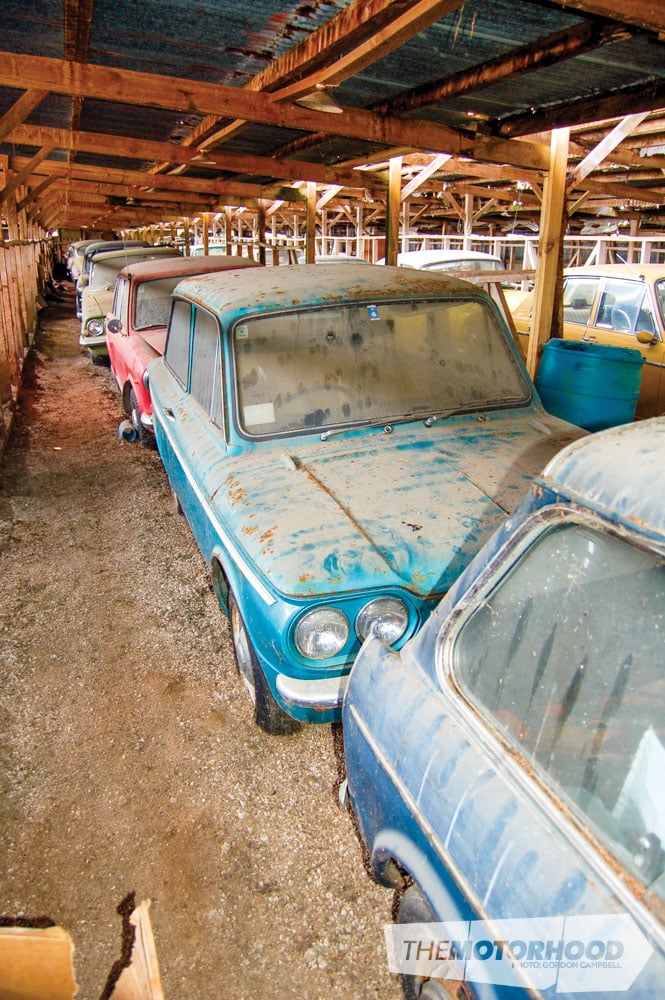
Most of the cars are still within our registration system, although keeping their licences on hold is a time-consuming job. Peter knows each of his cars individually — he can tell you how and where he acquired just about all of them. Some have interesting stories, as you would expect, while several, although they might be run-of-the-mill models, are unusual. For example, the FB model Vauxhall VX4/90 is rare enough, but there can’t be a car much rarer in this country than a left-hand drive example.

Art Union Singer
Checking out a few individual cars within Peter’s collection, I learn that a very tidy-looking Singer Vogue estate was bought by a Kiwi couple who won the Art Union — the national lottery that was the forerunner of the Golden Kiwi. That, of course, eventually morphed into Lotto. That couple travelled to the UK and bought the Vogue whilst there, later bringing it back to New Zealand. They returned to the UK two years later and visited the same dealer, who had been saddled with a set of Cosmic alloy wheels a customer had ordered and then refused to buy. The New Zealand couple bought the wheels, and had them shipped home to fit to their Vogue.
Today, under a light coating of dust, the Singer has a rust-free body — although it’s the car’s interior that really stands out. It is truly in that overused ‘as new’ condition. Quite simply, there’s not a mark on it, and the polished wood trim retains its new sheen.
A surprising number of Peter’s cars have interiors very much in a similar condition to that of the Vogue estate. A fairly early Sunbeam Rapier, several of the BMC 1100/1300s, and some others have interiors that have clearly been well looked after over the years, and haven’t seen much use. Peter pointed out that the Vauxhall Victors, for example, must have been trimmed in good-quality vinyl, because, 50 years on, it’s still in good condition and supple.

One lady owner
A Ford Escort Mark II was a common car in its day, even the upmarket 1.6-litre Ghia model. However, what makes Peter’s example so special is that it has covered just 12,600 kilometres. He is only the second owner, the Escort’s first being a lady who used it to go to the supermarket, church, and her cards group — and, presumably, to get a regular warrant of fitness. Otherwise, the car didn’t go anywhere. Peter also has a one-lady-owner Morris Minor, while a Nissan 300Z is two-owner car. The bright yellow Chrysler Hunter within his collection had one owner before him, and Peter believes it to be the last example off the Todd Motors production line.
A pair of Ford Cortinas was once owned by one couple — both Mk1 models — a wagon for him and a saloon for her. Peter bought them as a set. Another Ford in the collection is a black Consul Mk1 — another one-owner vehicle when Peter bought it.
A Hillman Super Minx, in white with a broad red stripe along the side, came from Christchurch, where it was used as the Linwood Fire Station’s rapid response unit. Peter can’t say that without laughing, but at the time the Minx was probably considered to be relatively rapid.
Despite the strong British flavour of his collection, Peter’s car-owning past has been quite varied. Back in his young days, he owned a 1963 Chevrolet Corvette for a while — the rare and very desirable split-window model. This was just one of several collectable, and now valuable, cars that have passed through his hands over the years.
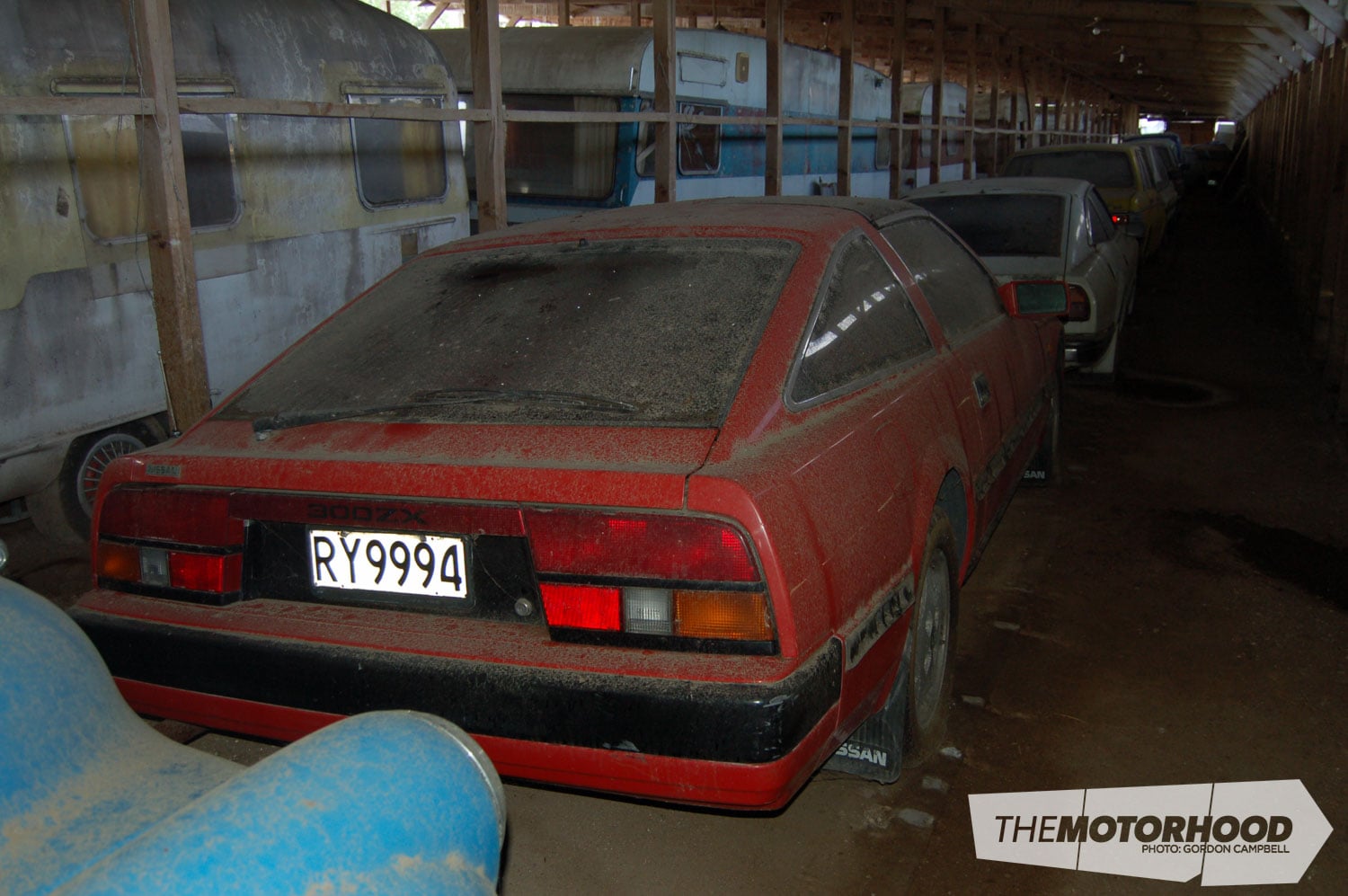
Most of Peter’s cars are in long-term storage, disturbed only occasionally when he wants to get a particular one out. With them parked bumper to bumper in long lines that seemingly disappear into the distance, extracting one can take most of a day. While the cars may be covered in dust, they are dry. Peter also has a ‘death row’ section, comprising mostly parts cars, sitting in a shed that is awaiting roof repairs.
Mind you, even the worst cars have potential in Peter’s eyes. Some would say he must be looking through a pair of very rose-tinted spectacles when he sees a dirt-covered car and assesses the work required to return it to the road, but there’s nothing wrong with that. Such enthusiasm is infectious, and it’s easy to imagine taking one of these dirty, uncut diamonds and turning it into a sparkling beauty.

Hot wheels
With so many original-condition cars stored away, it’s a bit surprising that Peter isn’t a stickler for originality, especially when it comes to wheels. A recent acquisition is a 1962 Vauxhall PA Cresta fitted with a set of 100-spoke wheels — not everybody’s cup of tea, although I think the wheels turn a smart-looking car into a real head-turner. The wheels and tyres fill the wheel arches perfectly, giving the Cresta a sporty stance.
Several cars have modern wheels, and they’ll also polarize opinions within classic-car circles. Peter’s FC model Vauxhall VX4/90 and a Singer Vogue have been fitted with large-diameter modern wheels, as was the Series V Humber 80 that Peter has almost finished rebuilding to his own taste. The Hillman Minx Series V has always been relatively common in New Zealand, but the Humber is a particularly rare one — it’s the only example Peter has seen.
Peter does most of the work on his cars. A cabinet maker and machinist/polisher by trade, he’s had 30 years as a self-taught mechanic, panel beater, and painter. He hasn’t done a lot of upholstery work, but feels he should be doing more of that as well.

A time to buy, a time to sell
The best news for car enthusiasts is that most of Peter’s cars can be purchased. While there are some that he won’t part with, he would like to downsize his collection, as he knows very well that he has enough projects for several lifetimes — he reckons that it’s time for others to enjoy some of these classic cars. A few have already gone, while a couple have names on them.
At the time of my visit, the Series III Rapier had been sold to a Taranaki enthusiast, and was awaiting extraction from its resting place. Several others might be heading to the same region. Peter’s not interested in tyre kickers, but if a car in the photographs grabs your attention, or you genuinely want a British project car (or two, or …), he’s open to hearing from you.
This article was originally published in New Zealand Classic Car Issue No. 297. You can add a print or digital copy to your collection by purchasing below:




















